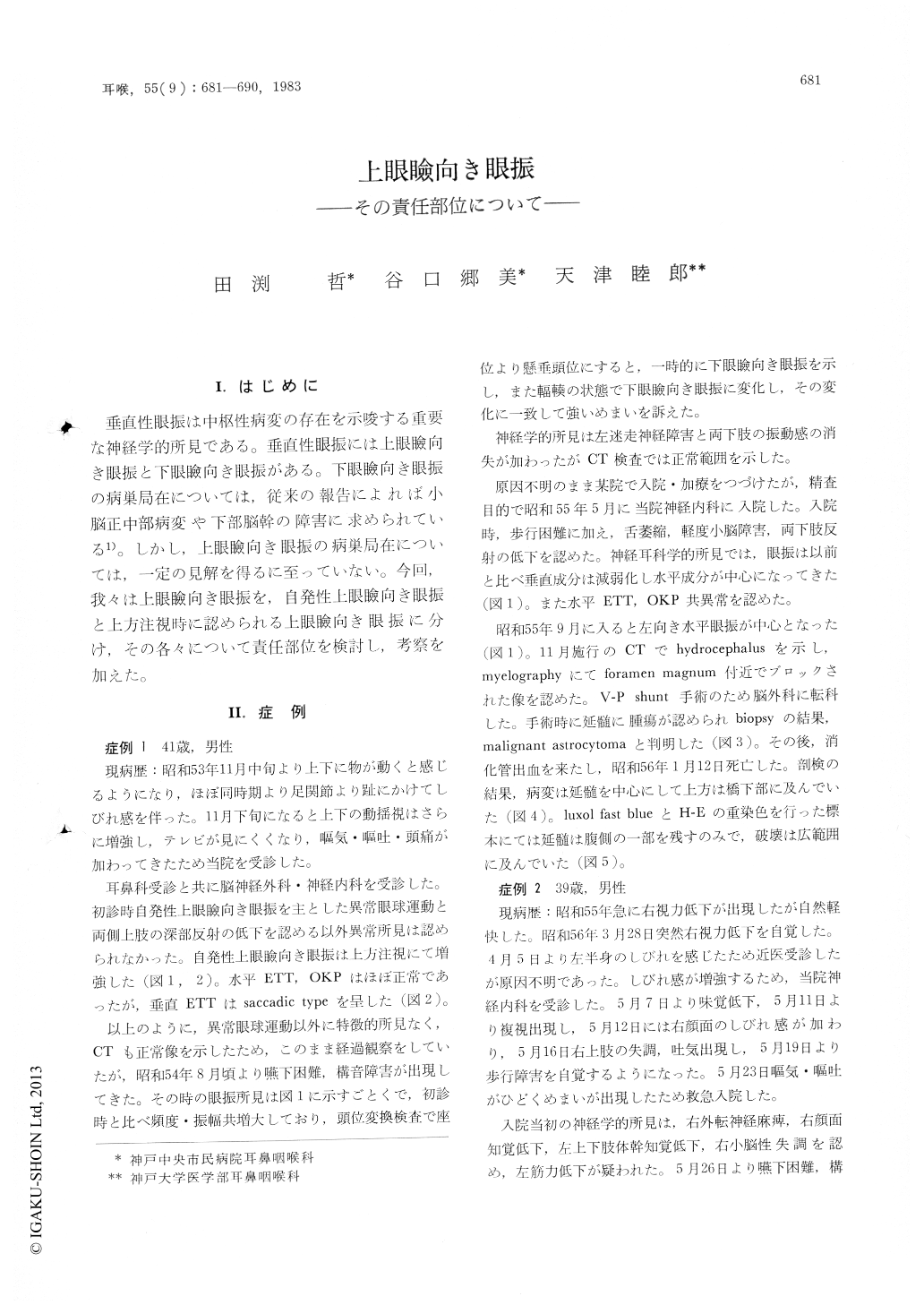Japanese
English
- 有料閲覧
- Abstract 文献概要
- 1ページ目 Look Inside
I.はじめに
垂直性眼振は中枢性病変の存在を示唆する重要な神神学的所見である。唾直性眼振には上眼瞼向き眼振と下眼瞼向き眼振がある。下眼瞼向き眼振の病巣局在については,従来の報告によれば小脳正中部病変や下部脳幹の障害に求められている1)。しかし,上眼瞼向き眼振の病巣局在については,一定の見解を得るに至っていない。今回,我々は上眼瞼向き眼振を,自発性上眼瞼向き眼振と上方注視時に認められる上眼瞼向ぎ眼振に分け,その各々について責任部位を検討し,考察を加えた。
At the present, little is known about mechanism of upbeat nystagmus.
In six patients with upbeat nystagmus, two patients had spontaneous upbeat nystagmus. The first case had a tumor in the medulla oblongata and the second had multiple sclerosis. The main lesion in the two cases located in the medulla oblongata. The other four cases had upbeat nystagmus on upward gaze. The possible lesion in the three cases located in the bilateral MLF The last case had a pontine glioma with bilateral gaze palsy. This sign indicated the lesion being located in the PPRF.
The following conclusions were obtained from our present study.
1) Spontaneous upbeat nystagmus is resulted mainly from a lesion in the medulla oblongata.
2) Upbeat nystagmus on upward gaze may be caused by the bilateral MLF lesion and/or caudal PPRF lesion.

Copyright © 1983, Igaku-Shoin Ltd. All rights reserved.


